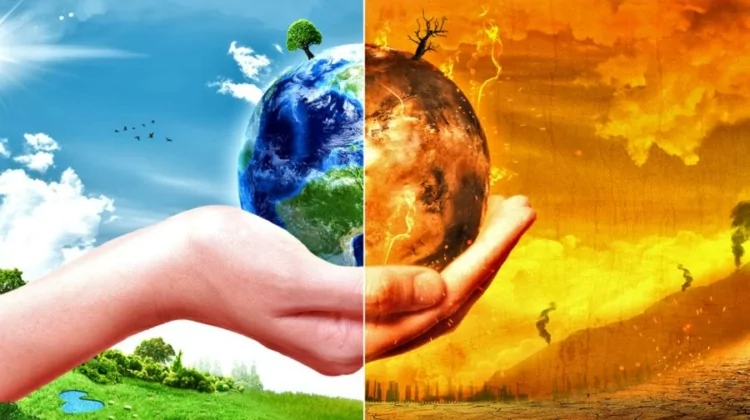
|
Getting your Trinity Audio player ready...
|
[Want even more content from FPM? Sign up for FPM+ to unlock exclusive series, virtual town-halls with our authors, and more—now for just $3.99/month. Click here to sign up.]
Recently, Secretary of the Interior Doug Burgum announced that the Trump administration is documenting the value of what we the people own: “enormous stores of oil, coal, minerals, timber, and geothermal power, all held within a vast property portfolio,” Kimberly Strassel of the Wall Street Journal writes, including “480 million surface acres, more than 2 billion offshore acres, and 750 million acres of subsurface minerals.”
These abundant assets potentially can create revenue for the federal government that could obviate the need to borrow trillions of dollars, and to extract billions more from our most productive citizens, in order to “rob selected Peter to pay collective Paul,” as Rudyard Kipling in 1919 described redistribution schemes. But as Strassel understates, such common-sense action will require “hard political choices.”
That’s because for two centuries, the West has practiced what Theodore Roosevelt called “nature fakery.” In a 1907 article, Roosevelt attacked Jack London and other romantic writers for practicing what TR called “nature fakery,” which made them “an object of derision to every scientist worthy of the name, to every real lover of the wilderness, to every faunal naturalist, to every true hunter or nature lover.”
Roosevelt was alluding to the Western transformation of how we think about the natural world and our relationship to it. Rather than recognizing nature’s “fierce eternal destruction,” as John Keats put it, we have idealized and romanticized nature, and indulged what Victorian art and social critic John Ruskin called the “pathetic fallacy.” This is the idealization of nature by attributing to it and animals the conduct and emotions of human beings. Thinking your dog “loves” you, for example, is wish-fulfillment, not a statement of reality. Stop feeding it and see how much it loves you.
The fact is, nature is literally inhuman. It has value such as beauty and awe only because it stirs in us pleasing and gratifying emotions. But these attitudes are the luxuries of the modern West, in which nature is, as Joseph Conrad put it, “the shackled form of a conquered monster,” its destructiveness tamed and domesticated in order to benefit human beings. Today, technology and science have further liberated, not completely of course, us from most of nature’s tyranny and indifference to this one small, weak, slow, puny species that, as Apollo says in the Iliad, “live like leaves now flourishing full of fire . . . and now wither and perish.”
In other words, we idealize and romanticize nature because we are protected from its destructive powers that science and technology have tamed and controlled. Another factor is the liberation of the great majority of Westerners from the endless drudgery of growing and producing food, which before the modern period required the lion’s share of human labor, but takes only a fraction of us today, and much of that fraction comprising immigrants. This means that few Westerners in our times know firsthand, as farmers do, nature’s fickle cruelty and indifference to our survival or misery.
As a subject of imaginative art, literature, and landscape tourism, then, such idealism is not dangerous, but therapeutic like pets. But in the Sixties environmentalism shifted from resource-management that benefits humans by managing resources for people in the present and the future; to idealistic nature fakery that sacrifices the well-being of humans to advance a political ideology, especially one that demonizes free-market capitalism for degrading nature for grubby corporate profit. This distortion of nature’s value has led to destructive policies that are jeopardizing our economy in order to solve environmental “crises” from endangered species regulations, to global warming mitigation programs and policies.
Just how destructive was made clear a few months ago when wildfires stoked by powerful Santa Ana winds, heated by the desert, blew into urbanized southern California. This phenomenon, along with wildfires in the Sierra Nevada, has been familiar for centuries. To mitigate the damage, American Indians cleared brush and cut fire-breaks in the forests to lessen the amount of fuel when a wildfire broke out. That’s genuine conservation, not the nature fakery that wants dense forests like the “forest primeval” for aesthetic reasons.
But that’s not all the Pacific Palisades fire should have taught us. Firefighters ran out of water because reservoirs and fire hydrants went dry due to bureaucratic incompetence and much worse––idiotic policies that let trillions of acre-feet of California’s bounty of water drain into the Pacific, in order to rescue an “endangered” two-inch bait-fish. This obsession with endangered species at the expense of human well-being is another example of feckless nature fakery.
Indeed, the enormity of this antihumanist policy is astonishing: As Victor Joecks of the Las Vegas Review Journal reported, “To help the fish, California scaled back how much water it sent to Southern California. ‘Since 2008, 1.4 trillion gallons of water has been flushed into the San Francisco Bay to protect the Delta smelt, an endangered species of fish, from water pumps,’ the San Diego Union-Tribune wrote in 2015. Further, environmental uses of water accounted for more than 50 percent of the state’s flows.”
Moreover, Joecks continues, “That waste has continued. In January 2023, massive storms hit the state. They dumped trillions of gallons of water, but 94% of it drained into the ocean. Part of the problem was that California didn’t have the infrastructure to capture more of it. But officials also turned down those pumps to protect the Delta smelt.”
But all that astonishing stupidity is nothing compared to the mother of all feckless and dangerous nature fakery. Anthropogenic, Catastrophic Global Warming is based on the dubious hypothesis that human-caused increases in atmospheric CO2 emissions will soon heat our atmosphere enough to destroy our civilization and return us to the Stone Age.
The daffy solution to this ginned-up crisis is to eliminate the cheap and abundant fossil fuels that created and powers the modern world, and replace it with “green” energy like solar panels and wind turbines––the energy of which is intermittent, difficult to store, and still requires fossil fuels. Yet the West, the richest and supposedly most advanced nations in the world, are spending billions and billions of dollars on grants, tax breaks, and subsidies for net-zero carbon policies and promoting EVs, even though the infrastructure necessary to make electric powered vehicles viable is many decades away, assuming it’s even possible.
How is it that these environmental “crises” and their multiple-trillion-dollar solutions gain so much political traction? Money and politics, of course, are important factors. Government funding for “global warming” research, and subsidies for “alternative energy” are powerful inducements for lupine corporations and politicians to promulgate climate change alarmism and policies, while taxpayers foot the bill.
A more insidious factor, however, are the wish-fulfilling myths that routinely replace science in modern environmentalism. Much of the rhetoric that characterizes its arguments indulges two powerful ancient myths in particular, the Noble Savage and the Golden Age. Since the dawn of civilization, these ancient stories have spoken to humanity’s anxieties about living in the complex human world of language, law, culture, government, cities, trade, technology, agriculture, crime, war, and private property––evils absent from both the Golden Age and the lives of Noble Savages. Moreover, both populations live in harmony with nature, which like a nurturing mother provides everything needed for not just for survival, but also health, leisure, and happiness––all without much effort by people.
Another feature of these myths is the absence and denigration of technology, a motif that the Romantic Age popularized during the advent of the Industrial Age with its “Satanic mills,” as William Blake described that new era, and also birthed capitalism that trapped people in “cash nexus,” Thomas Carlyle’s expression popularized by Karl Marx.
And here we see another influence that accounts for the default self-loathing, if not hatred, of the modern West––especially America, its richest, most powerful state. During the Industrial Revolution, this civilizational self-hatred was turbo-charged by Romantic poet, artists, and intellectuals, who regarded capitalism as a philistine obsession with infra dig money-grubbing harmful to culture and nature alike, as William Wordsworth said in his famous admonition, “getting and spending we lay waste our powers/ Little we see in Nature that is ours.”
This anxiety and demonizing of the industrialize West were given a patina of “science” by Sigmund Freud, who in Civilization and its Discontents (1929) speculated that civilization itself was the cause of our repression and neuroses: “This contention holds that what we call our civilization is largely responsible for our misery, and that we should be much happier if we gave it up and returned to primitive conditions.”
Freud anticipated the radical, antihumanist environmentalism of extremists––“deep ecologists” like Bill Deval, who rejected any understanding of environmentalism that includes calculations of benefits for humans. Instead, we should follow “ecocentrism,” which means “rejecting the position that some life forms have greater worth than other life forms.” The implications of this antihumanist creed opened the door to the ecoterrorists like the murderous Unabomber. Moreover, it is redolent of the logic of the Nazis’ “final solution,” and the specious moral equivalence that those destroying the environment and nature should be destroyed.
Deval explicitly makes this link in his preposterous analogy that “students in the natural resources sciences and management . . . are much like the guards in Nazi death camps,” and he compared the cost efficacy of the timber industry to the “cost-effective means the Nazis used to murder large numbers of people.” Ironically, as philosopher Luc Ferry points out, it is radical environmentalism that echoes Nazism: “In both cases we are dealing with the same romantic and/or sentimental representation of the relationship between nature and culture” that prioritizes the primitive over the civilized––just what Freud considered a good thing.
Finally, this long tradition of idealizing nature and hating the modern world and capitalism has given communism, a kindred antihumanist ideology, powerful wish-fulfilling tropes that can be leveraged by leftists. As Cultural Marxist and Frankfurt School critics Max Horkheimer and Theodore Adorno put it in their very influential expression of this prejudice against industrial capitalism, Dialectic of Enlightenment (1947), “Industrialism makes souls into things. . . The countless agencies of mass production and its culture impress standardized behavior on the individual as the only natural, decent, and rational one. Individuals define themselves now only as things, statistical elements, successes or failures.” Arguments such as this is how we’ve ended up with Green partis or “Watermelons” ––Green on the outside, Red on the inside.
Doug Burgum and others in the Trump administration are working to restore common sense environmental polices that prioritize improving human life instead of succumbing to capitalist-hating, Disneyfied and romanticized juvenile clichés. Rather than pleasing myths and nature fakery, we need what environmental writer Gregg Easterbrook calls “ecorealism,” the sober conviction “that logic, not sentiment, is the best tool for safeguarding nature,” and “that accurate understanding of the actual state of the environment will serve the Earth better than expressions of panic.” Ecorealist policies for managing our nation’s bounty of resource is how we make conservation and America great again.


Their always telling us that The Earth is Fragile and The Delicate Balance of Nature now some Crack-Pot claims that Men Cars and Re Meat causes or contributes to Global Warming/Climate Change. Who ever came up with that stupid Study must have Sawdust for Brains